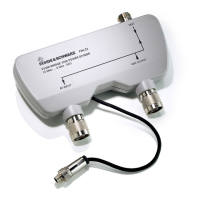R&S
®
CMW 500 Annexes
Interfaces and Connectors
Operating Manual 1202.3986.32 – 03 415
Instrument access via VXI-11 is usually achieved from high level programming
platforms by using VISA as an intermediate abstraction layer. VISA encapsulates the
low level VXI or even GPIB function calls and thus makes the transport interface
transparent for the user. The necessary VISA library is available as a separate product.
For details contact your local R&S sales representative.
11.1.2.1 VXI-11 Protocol
The VXI–11 standard is based on the RPC protocol which in turn relies on TCP/IP as
the network/transport layer. The TCP/IP network protocol and the associated network
services are pre-configured. TCP/IP ensures connection–oriented communication,
where the order of the exchanged messages is adhered to and interrupted links are
identified. With this protocol, messages cannot be lost.
Remote control of an instrument via a network is based on standardized protocols
which follow the OSI reference model (see Fig. below).
Example for LAN remote control based on the OSI reference model
Based on TCP/UDP, messages between the controller and the instrument are
exchanged via open network computing (ONC) – remote procedure calls (RPC). With
XDR (VXI–11), legal RPC messages are known as VXI–11 standard. Based on this
standard, messages are exchanged between the controller and the instrument. The
messages are identical with SCPI commands. They can be organized in four groups:
Program messages (control command to the instrument)
Response messages (values returned by the instrument)
Service request (spontaneous queries of the instrument)
Low–level control messages (interface messages)
A VXI–11 link between a controller and an instrument uses three channels: core, abort
and interrupt channel. Instrument control is mainly performed on the core channel
(program, response and low–level control messages). The abort channel is used for
immediate abort of the core channel; the interrupt channel transmits spontaneous
service requests of the instrument. Link setup itself is very complex. For more details
refer to the VXI–11 specification.

